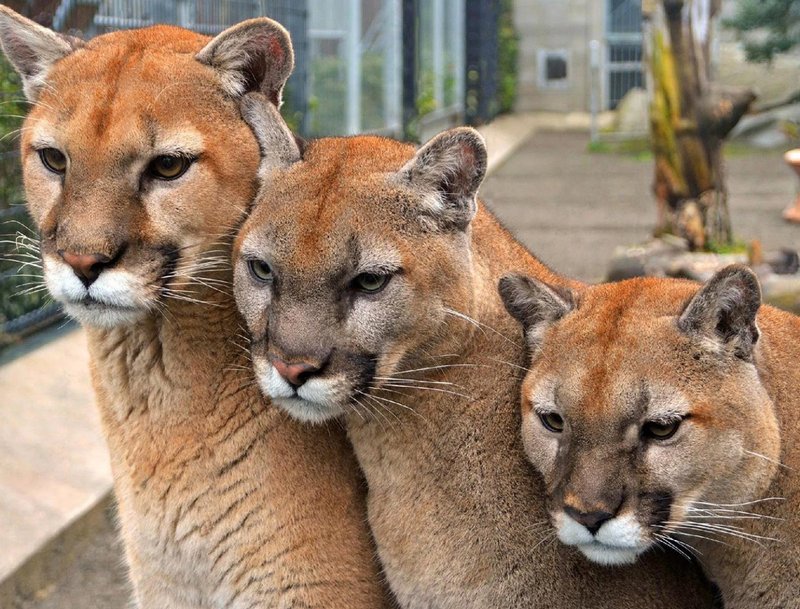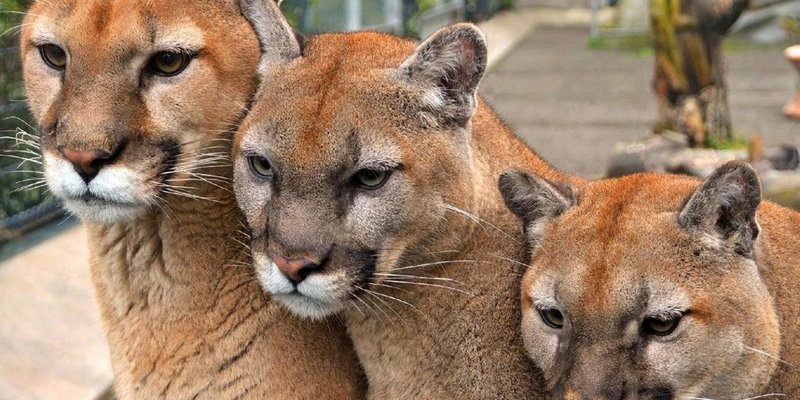
Imagine you’re sipping coffee with a friend, and the topic turns to wildlife. You might pause to ponder what it means for an animal to be endangered. It’s kind of like having a favorite band that’s slowly losing its audience; the risk of fading away is real unless something changes. Here’s the thing: cougars have faced challenges in their populations, but they are not uniformly endangered. Let’s dive deeper into their status and what conservation efforts are in place around the globe.
Understanding Cougar Populations
Cougars are fascinating animals known for their adaptability. They inhabit a wide range of terrains, from mountains to forests to deserts. Their populations vary across the Americas, where they generally thrive in undisturbed areas. However, things get complicated when you zoom in on specific regions.
In places like California, cougars face significant threats, including habitat loss, poaching, and conflicts with humans. Urban expansion often leads to loss of territory, which can force cougars into closer contact with communities. This not only endangers cougars but also prompts fear among residents. In contrast, areas in the Rocky Mountain region have healthier populations, indicating that conservation efforts can make a difference.
You might be wondering about the actual numbers. Estimates suggest that there are around 30,000 cougars in North America. That’s a significant number, but population density varies drastically from one location to another. In some areas, they are thriving, while in others, they’re hanging on by a thread.
Reasons Behind Endangerment
So, what’s putting cougars at risk? There are a few factors that contribute to their endangered status in various regions.
- Habitat Loss: As cities and farms expand, cougars lose natural habitats. They rely on vast territories to hunt and breed, and when these areas shrink, it becomes a struggle for survival.
- Human-Wildlife Conflict: When cougars venture into areas populated by humans, it can lead to dangerous encounters. Livestock predation triggers protective measures that often result in killing the animals.
- Poaching: Although hunting cougars is strictly regulated in many areas, illegal poaching still poses a threat to their populations.
Each of these factors plays a role in the overall health of cougar populations. It’s not just about the number of cougars; it’s about their ability to thrive in a safe and sustainable environment.
Conservation Efforts Around the World
While the situation may sound dire, conservation efforts are underway to protect cougars and their habitats. Many organizations and governments recognize the importance of these big cats and are taking steps to ensure their survival.
One initiative involves establishing protected areas where cougars can roam freely without the threat of human interaction. These wildlife corridors allow them to migrate and maintain genetic diversity, which is crucial for their long-term survival. Additionally, educational programs help raise awareness about cougars among local communities, promoting coexistence and reducing fear.
Another fascinating effort is the use of technology. Wildlife cameras, GPS tracking, and conservation drones are becoming essential tools in monitoring cougar populations. These high-tech methods allow researchers to gather valuable data on their behavior, movements, and population density.
The Role of Public Awareness
Public perception plays a huge role in conservation. When people understand the importance of cougars in their ecosystems, they’re more likely to support conservation efforts. You might be surprised to learn just how vital cougars are to maintaining balanced environments — they help regulate prey populations, which in turn supports overall biodiversity.
Hosting community events, engaging in local schools, and sharing information on social media can make a difference. Imagine a neighborhood that embraces its local wildlife, working together to protect these animals instead of fearing them. That kind of public awareness can lead to meaningful change.
You might also see increased advocacy for policies that support wildlife protection. When citizens speak up, policymakers often respond, creating a more conducive environment for cougars to thrive.
Comparing Regional Conservation Strategies
The approach to conserving cougars varies greatly by region, often influenced by local culture, economy, and geography.
For instance, in the Sierra Nevada, conservationists have focused on habitat restoration and connectivity. They’re removing barriers like fences that fragment habitats, allowing cougars to travel more freely. In contrast, the Florida panther, a subspecies of the cougar, has drawn attention due to its critically low population. Here, the emphasis is on breeding programs and public education about conservation efforts.
In South America, cougars face different challenges. In areas where agriculture dominates, conservation strategies often include community-based programs that incentivize coexistence. These programs can help farmers protect their livestock while ensuring cougars can live nearby.
The effectiveness of these strategies largely depends on local cooperation and understanding. When communities are involved, they can often create sustainable solutions that benefit both humans and wildlife.
What Can You Do to Help?
Feeling compelled to do something? You’re not alone! There are several ways you can actively participate in cougar conservation.
- Support Local Conservation Groups: Find and donate to organizations that focus on wildlife conservation in your area.
- Advocate for Policy Change: Write to your local representatives to support laws that protect wildlife habitats and promote coexistence.
- Educate Others: Share what you learn about cougars and their importance on social media or in your community.
Understanding the plight of these big cats can inspire others to take action, creating a ripple effect that expands beyond your social circles. Remember, every little bit helps.
Final Thoughts
So, are cougars endangered? The answer isn’t straightforward. While some populations are in peril, the overall status of cougars varies across different regions. With ongoing conservation efforts, public education, and community involvement, we can improve their chances for survival.
Much like our favorite songs that we want to keep playing, we have to keep the conversation going about cougars and their role in our ecosystems. If we work together, there’s a good chance these magnificent creatures will continue to roam our wild landscapes for generations to come. Let’s keep them around, not just for our sake, but for the health of nature itself.

